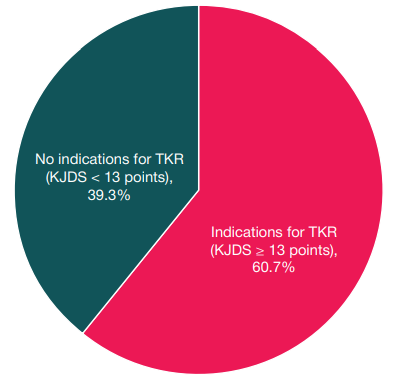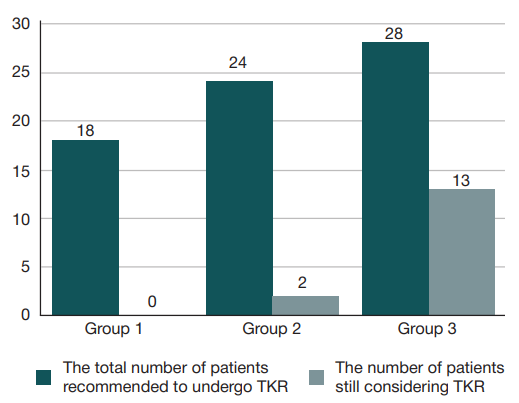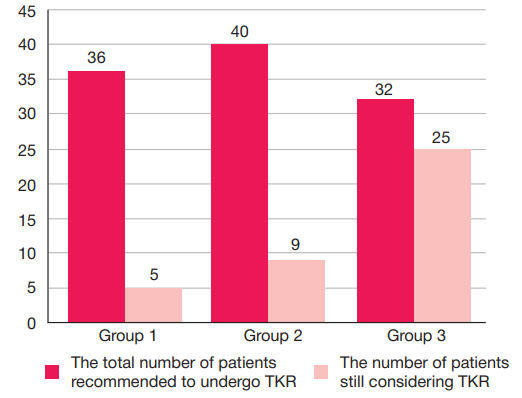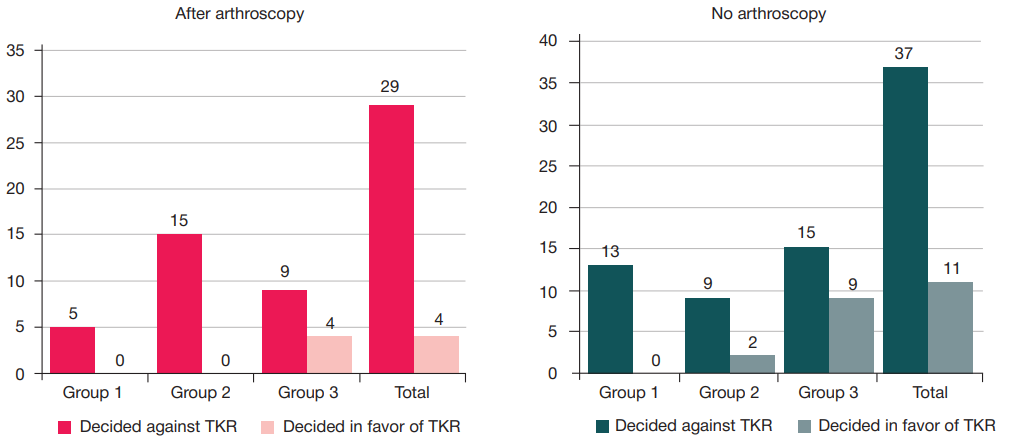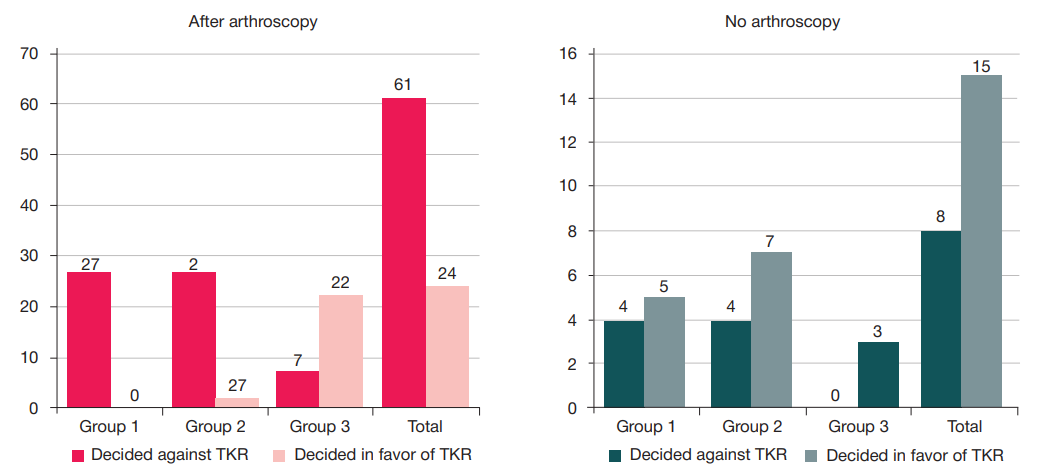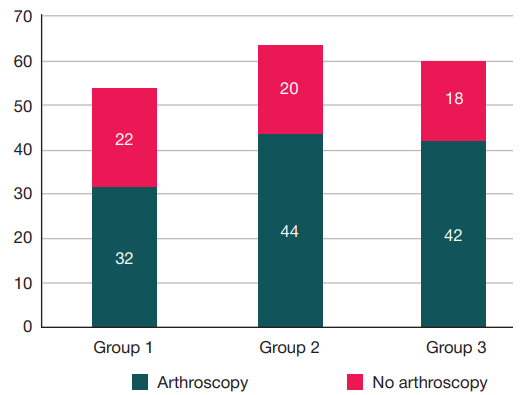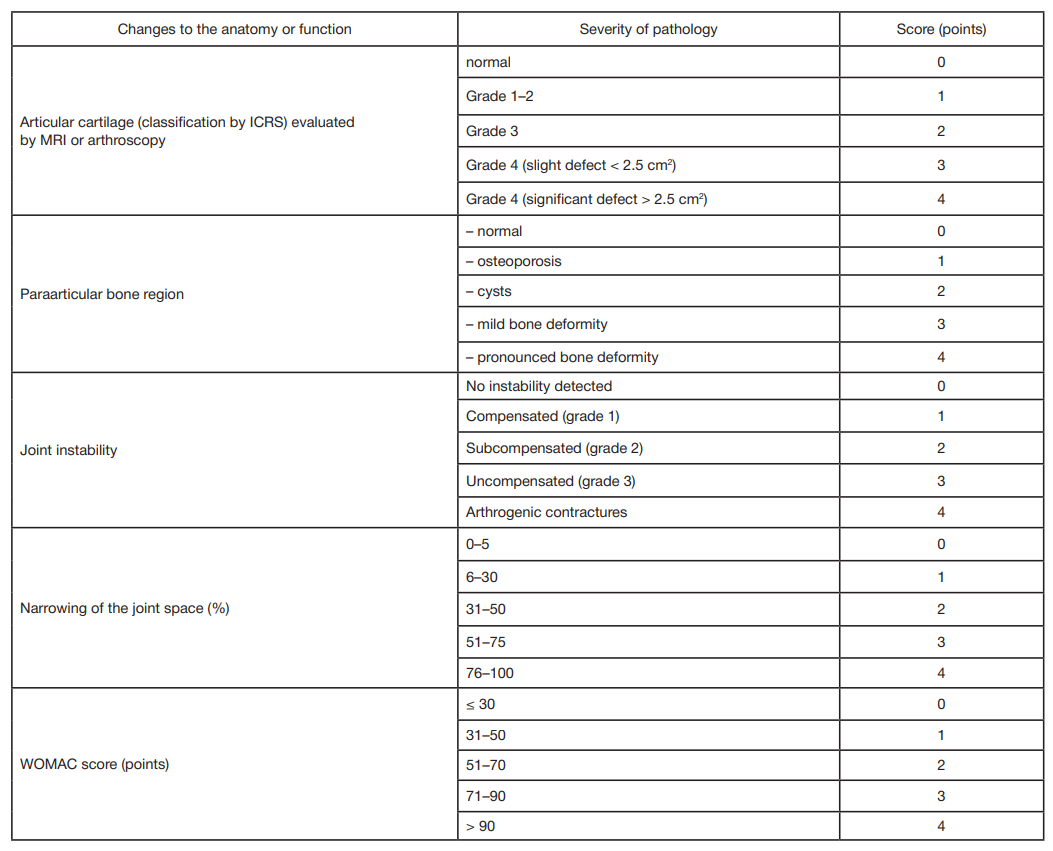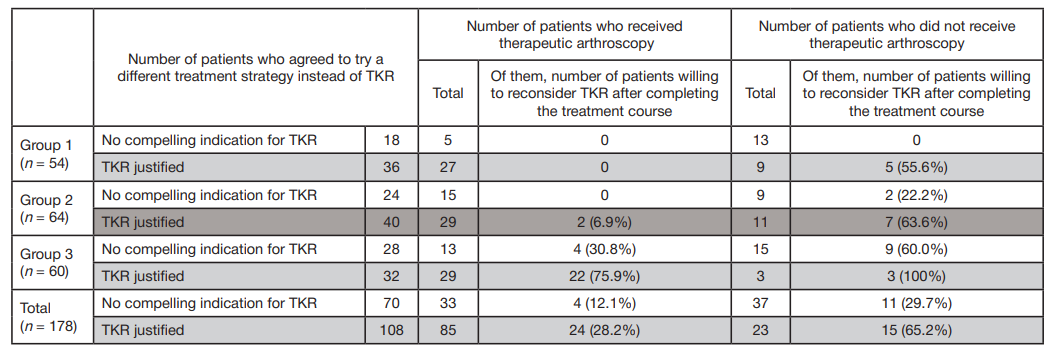
ORIGINAL RESEARCH
Osteoarthritis of the knee in the elderly: is knee replacement always justified?
Faculty of General Medicine, I. M. Sechenov First Moscow State Medical University, Moscow, Russia
Correspondence should be addressed: Andrey V. Garkavi
Trubetskaya 8, bld. 2, Moscow, 119991; ur.xednay@22ragva
Author contribution: Lychagin AV devised a KJDS scale, planned the study, performed arthroscopy and follow-up observation, processed and analyzed the data. Garkavi AV planned the study and proposed its design, performed arthroscopy, intraarticular injections and follow-up observation, processed and analyzed the data, and wrote the manuscript. Meshcheryakov VA performed arthroscopy, intraarticular injections and follow-up observation, surveyed the patients. Kaykov VS performed arthroscopy, intraarticular injections, and follow-up observation, surveyed the patients.
